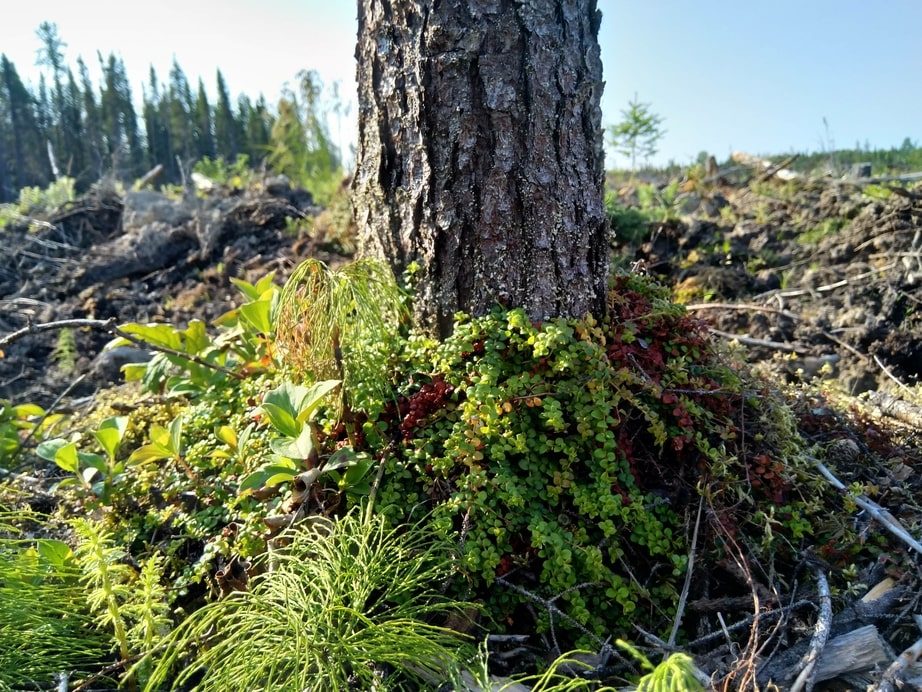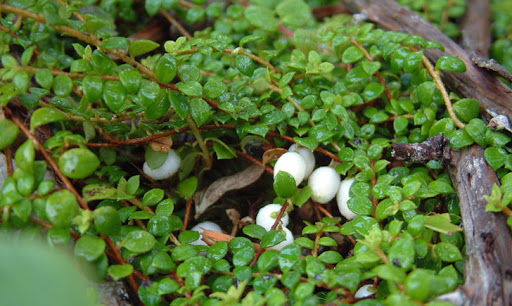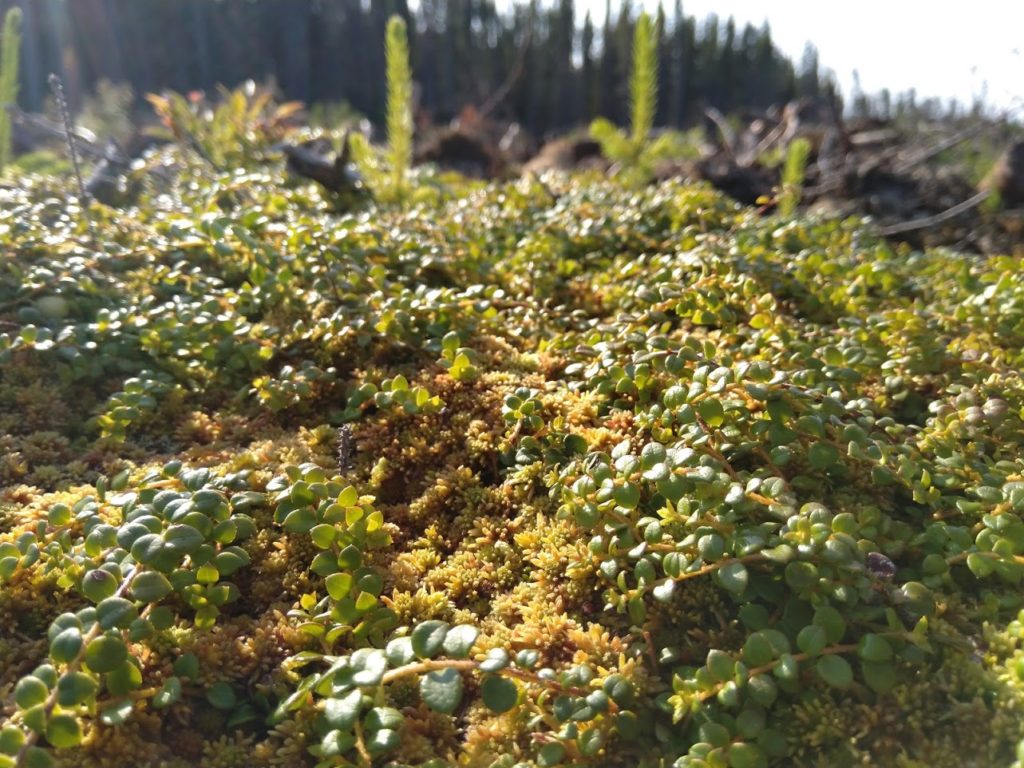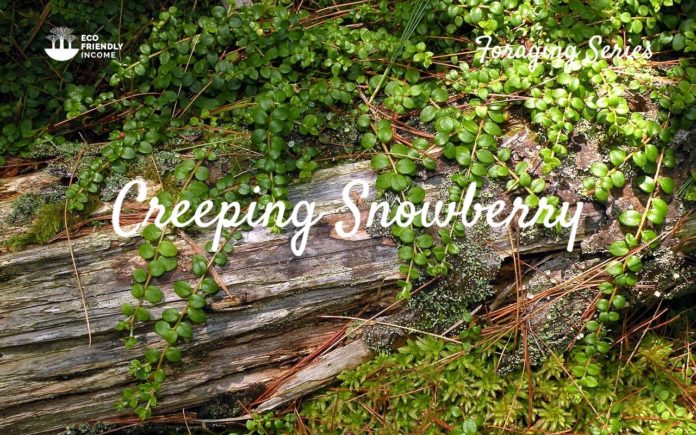
Featured Photo by Doug Mcgrady / CC by 2.0
It’s a special herb, and luckily, identifying creeping snowberry (Gaultheria hispidula) isn’t too hard. It has a wonderful aroma that’s easy to recognize and makes delicious, fragrant tea.
You can also extract creeping snowberry essential oil to make perfume, soap, or even candles. Mmmm.
As a tree planter working in the forest, I’ve had the chance to see them in the wild many times. In some places that I plant, it’s literally everywhere! Sometimes I stop to take a stem and chew on it.
Despite this plant being so common in my area, doesn’t mean I shouldn’t be thoughtful when harvesting it. When I forage for this herb, I really try to pick sustainably, and I think everyone should.
If you go out picking all the gaultheria hispidula patches near you, they simply won’t come back.
Now today I’d like to share with you my knowledge of this wonderful plant.
Here’s what you can expect to learn in this article:
- Picking Season
- How to Identify Creeping Snowberry
- Where You Can Find it
- How to Harvest it Sustainably
- How to Propagate Creeping Snowberry
- How to Store it
- Creeping Snowberry use in Forestry
Let’s get started!
Creeping Snowberry Picking Season
Creeping snowberry is an evergreen plant, which means it won’t lose its leaves during winter. This means they can be picked at almost any time of the year.
My favorite time of the year to pick them is during early spring when the forest is just coming back to life.
How to Identify Creeping Snowberry (Gaultheria hispidula)
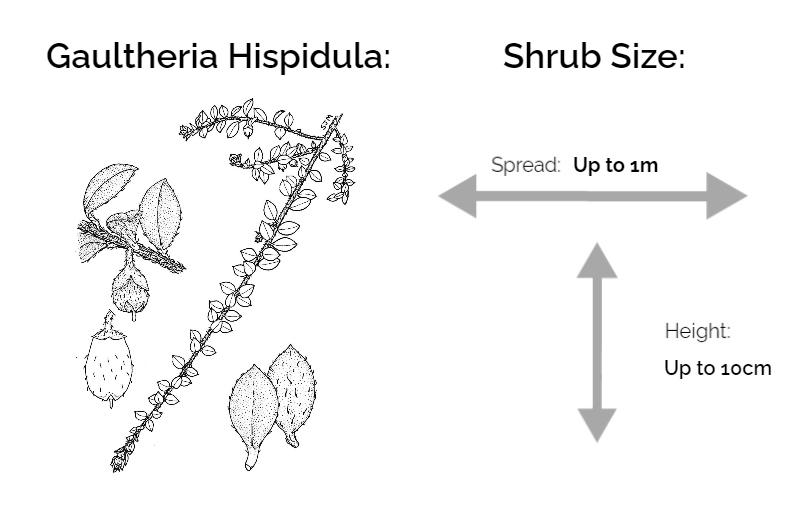
Creeping snowberry (Gaultheria hispidula) is a low-lying vine-like plant with small egg-shaped (ovate) leaves, with ciliate (hairy) margins that grow in an alternate arrangement on the stem. If you look closely, the stems also have tiny hairs growing on them.
It’s usually a bright green color but leaves can turn into a reddish-brown color under certain conditions.
It produces fruits but uncommonly, they look like white tic-tacs and have a sweet, minty flavor.
It’s rare, but you can see tiny pink to white flowers blooming on the stems sometimes from May to July.
Where You Can Find Creeping Snowberry
You can find creeping snowberry growing in peat bogs where moss is present. It often grows in abundance on mossy forest floors and near dead tree stumps.
Common habitats for creeping snowberry are freshwater lake edges where the soil is humid all year long.
They are found in the large part of the Canadian boreal forest and as south as West Virginia.
I’ve seen Creeping Snowberry grow near the following plants:
- Wild Cranberry (Vaccinium oxycocos)
- Labrador Tea (Rhododendron groenlandicum)
- Black Spruce (Picea mariana) & White Spruce (Picea glauca)
- Rusty Brown Sphagnum (Sphagnum muscum)
When you see any of these, you might find creeping snowberry somewhere close, it’s always good to keep that in mind.
How to Harvest Creeping Snowberry Sustainably
Since this plant doesn’t grow very fast, you want to be very thoughtful of each vine when you pick.
My personal method for picking them sustainably:
- Find a sphagnum moss mound with snowberry growing on it.
- Next, use a sickle or sharp knife to cut a single snowberry vine at the base.
- Move on to the next plant.
It’s simple, taking only one vine will harm the plant minimally, and keep it alive.
The majority of creeping snowberry plants have multiple vines, taking only one per plant is the sustainable way to harvest.
Something else I like to do when I see the white fruits is to toss them on the ground and cover them with a bit of forest litter.
You don’t need to bury them, they need to go through natural stratification. The best way to help them is to cover them with leaf litter, then they’ll have a better chance to germinate next spring.
How to Propagate Creeping Snowberry (Gaultheria hispidula)

Hardiness Zone: 2-7

Soil Type: Well-drained, low nutrient, acidic soil.

Water: Wet. Regular moisture is important.

Exposure: Partial Shade
Creeping Snowberry (Gaultheria hispidula) is an evergreen shrub hardy up to zone 2. Its vine should be planted in a well-drained, acidic, low nutrient soil. You should water it weekly to make sure it retains moisture.
Commercial Value
Propagating creeping snowberry has some merit commercially. Its leaves have a delicious taste and medicinal properties that make it popular as tea.
Additionally, its essential oil has many uses. From making perfume to soaps, lip balm, gum, and candles.
Growing and propagating creeping snowberry can become profitable if done right.
The Best Way to Propagate Creeping Snowberry:
Division
Snowberry can be propagated easily by division. This is because they naturally spread by stolon (horizontal stems).
Here’s how to do it:
- Find a wild snowberry patch and identify the largest plant.
- Follow some vines from a mother plant, there should be plenty.
- Pull up slightly on a vine and you’ll see some parts are attached to moss by root.
- Carefully pull the roots out and snip the part of the vine you want.
- Keep moist until you transplant, and that’s it!
If you want to grow them on a large scale, having many mother plants to divide from is the way to do it.
How to Store Freshly Picked Creeping Snowberry
To retain the top flavor and fragrance, creeping snowberry leaves need to be dried and stored properly.
First, you want to air dry them. What I do is use a mesh bag when I collect leaves, then when I’m done I hang up the mesh bag.
You don’t want to hang the mesh bag directly in the sun, or it risks breaking apart the inner components and oils of the leaves.
Let them air dry for a week, you’ll see they’ll become bone dry and some leaves will show dense essential oil spots.
Finally, place them in a sealed mason jar, stored away in a cool dark place.
When you feel like tea, just add a stem or two into a cup and let them steep for 5 mins in hot water. You’ll get to smell and taste the delightful aroma again!
Application in Forestry
I really think conserving the growth of this plant in our forests is important. There’s a potential to develop our forestry industry further with plants like these.
The lumber industry could be much less wasteful and use Non-timber forest products that go to waste in logged areas.
We can harvest plants like creeping snowberry and also reseed them.
Let me give you an example, tree planters go and reforest areas cut clear for lumber, and add new seedlings to populate the area. Why couldn’t we also seed plants like creeping snowberry to add more value to these tree plantations?
Maximizing the use of tree plantations deserves merit, doesn’t it?
- We start by respecting the biome
- Only plant what already naturally grows there
- Harvest NTFP (non-timber forest products) along with lumber
- Bring in more jobs from the harvest and the value addition after (transforming into essential oil, tea, etc.)
Food for thought?
Let me know what you think!

